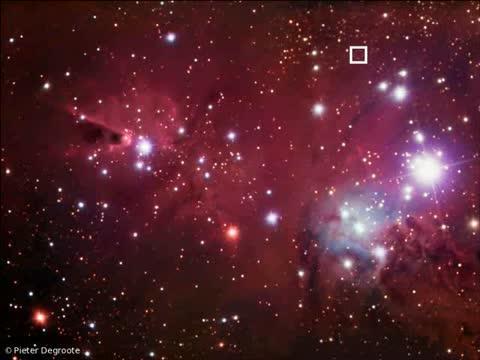Acoustic vibrations – sound waves – are produced by radiation pressure inside stars. First author Konstanze Zwintz, a postdoctoral researcher at KU Leuven's Institute for Astronomy, and her colleagues studied the vibrations of 34 stars aged under 10 million years and sized between one and four times the mass of our sun.
"Our data shows that the youngest stars vibrate slower while the stars nearer to adulthood vibrate faster. A star's mass has a major impact on its development: stars with a smaller mass evolve slower. Heavy stars grow faster and age more quickly," says Dr. Zwintz.
While theoretical physicists have posited before that young stars vibrate differently than older stars, Zwintz' study is the first to confirm these predications using concrete data from outer space.
"We now have a model that more precisely measures the age of young stars," says Zwintz. "And we are now also able to subdivide young stars according to their various life phases."
The researchers studied the nebula known commonly as the Christmas Tree Cluster. Their data was obtained from the Canadian MOST satellite and the European CoRoT satellite as well as from ground-based facilities such as the European Southern Observatory (ESO) in Chile.

In a young region like the so-called Christmas Tree Cluster, stars are still in the process of forming. A star is 'born' once it becomes optically visible (bottom right). During its further evolution, the star contracts and gets smaller in size and hotter until the core temperature is sufficient to start nuclear burning of hydrogen. This marks the end of the stellar childhood phase (bottom left). While the young star evolves from its birth to the beginning of hydrogen burning, its pulsation properties change: the least evolved, i.e., youngest, stars pulsate slower and the most evolved while the oldest stars pulsate faster.
(Photo Credit: KU Leuven - Pieter Degroote)

In a young region like the so-called Christmas Tree Cluster, stars are still in the process of forming. A star is 'born' once it becomes optically visible (bottom right). During its further evolution, the star contracts and gets smaller in size and hotter until the core temperature is sufficient to start nuclear burning of hydrogen. This marks the end of the stellar childhood phase (bottom left). While the young star evolves from its birth to the beginning of hydrogen burning, its pulsation properties change: the least evolved, i.e., youngest, stars pulsate slower and the most evolved while the oldest stars pulsate faster.
(Photo Credit: ESO)
Source: KU Leuven